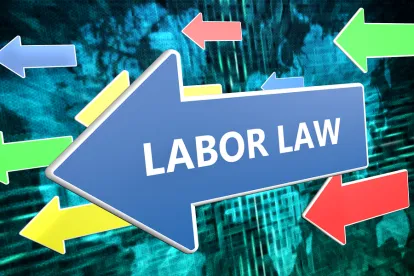This Employment Law This Week® Monthly Rundown discusses the most important developments for employers heading into June 2019. The episode includes:
1. Worker Classification in the Gig Economy
There is a bit more clarity about the gig-economy workforce, thanks to state and federal regulators. The Texas Workforce Commission last month adopted a broad administrative rule under which most gig-economy workers in Texas will be independent contractors. Meanwhile, on the federal level, the National Labor Relations Board (“NLRB” or “Board”) General Counsel’s office released an advice memo finding that drivers for a ride-share company are independent contractors and not employees. And the Department of Labor separately issued an opinion letter on the classification of certain gig workers under the Fair Labor Standards Act. The letter said workers providing services to customers referred to them through an unidentified virtual marketplace were properly classified as independent contractors.
“The opinion letter is consistent with recent case law that’s been developing over the past few years and, in some ways, mirrors the reasoning and rationale in those decisions. Having said that, it’s very important to remember that the tests for determining independent contractor status vary by jurisdiction and by statute. So, the opinion letter is going to be less valuable in certain contexts and certain jurisdictions, including in states like California that apply the ABC test to determine independent contractor status.” – Kevin Vozzo, Member of the Firm, Epstein Becker Green
Learn more here: https://www.natlawreview.com/article/dol-endorses-independent-contractor-status-gig-economy
2. NLRB Announces Rulemaking Agenda
Looking ahead, the NLRB has announced its new rulemaking priorities. In addition to indicating that it intends to move forward with its proposed joint-employer rule, the Board plans to engage in rulemaking to revise the Obama-era expedited election and representation-case procedures and its standards concerning employee access to an employer’s private property for organizing and other union activity, among other priorities. According to Board Chairman John Ring, “The Agenda reflects the Board majority’s strong interest in continued rulemaking.” Stay tuned.
Learn more here: https://www.natlawreview.com/article/nlrb-announces-plans-further-rulemaking-election-rules-union-access-to-employer
3. National Backlash Builds Against Non-Compete Agreements
Despite an easing of pressure at the federal level, the national backlash against non-compete agreements continues to build momentum. Several states have passed legislation restricting these agreements, which temporarily prohibit departing employees from taking jobs with competitors. That new legislation, along with pending legislation and the judicial climate, has led employers to explore alternatives.
“Employers are very aware of the hostile environment towards non-competes, so what they’ve been doing is exploring alternatives, such as garden leave agreements, paid non-compete periods, and moving towards non-solicitation agreements. Non-solicitation agreements don’t raise the same sort of public policy concerns as a traditional non-compete agreement does, because they’re only restricting the ability to solicit or do business with certain customers or clients; they’re not restricting individuals’ ability to work or earn a living. As a result, there is neither the political nor the judicial hostility to non-solicits, so we haven’t really seen the legislation restricting those that we have with respect to non-compete agreements.” – Peter Steinmeyer, Member of the Firm, Epstein Becker Green
4. Tip of the Week
Anthony Campanelli, of Deloitte Financial Advisory Services, shares some tips for assessing compliance with New Jersey’s Equal Pay Act.
“New Jersey’s Equal Pay Act has been in effect for nearly a year, and, in this past year, we’ve seen an uptick in litigation of companies potentially violating this new law. I’m going to share with you five tips for conducting a proactive self-assessment. The first tip: you want to put together the right team. And this is a team of not just human resource professionals but also your legal labor employment attorneys, your forensic analytics specialists, and, of course, the business. The second tip: you want to execute a risk assessment. You want to understand the policies and procedures that your company has in place. You also want to think about what locations, segments, and roles may be prone to potential risk. The third tip: you need to obtain the data for the analysis. And this includes both the quantitative data, as well as the qualitative data. Fourth: you want to utilize forensic analytic specialists—specialists that are able to interrogate the data to identify outliers. And finally, the fifth tip: you need to investigate those results. You need to understand those employees that could be above or below the median.” – Anthony Campanelli, Deloitte Financial Advisory Services LLP





 />i
/>i

